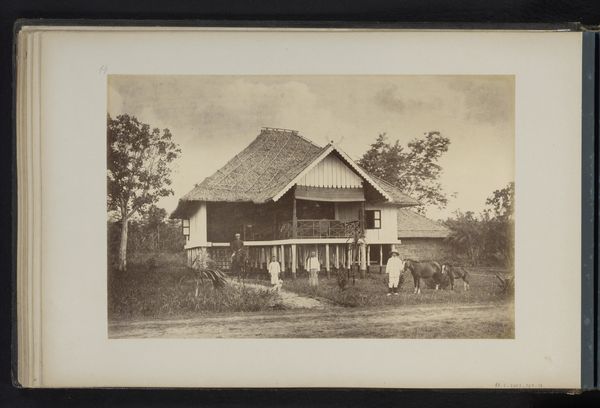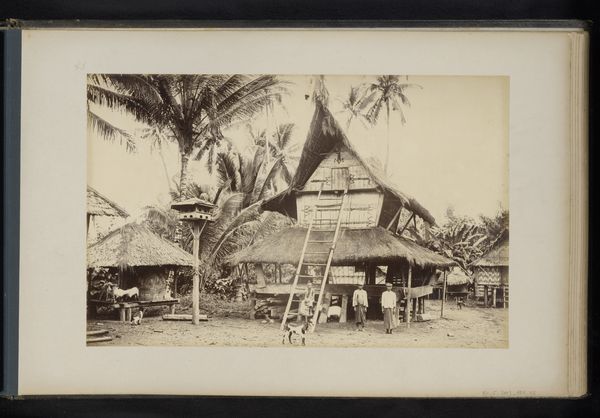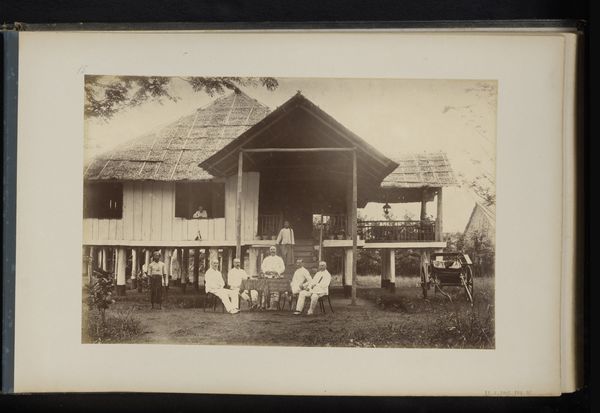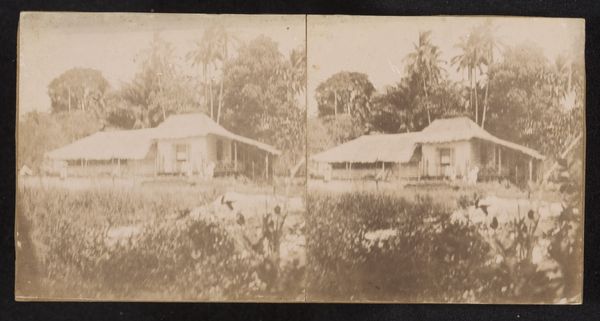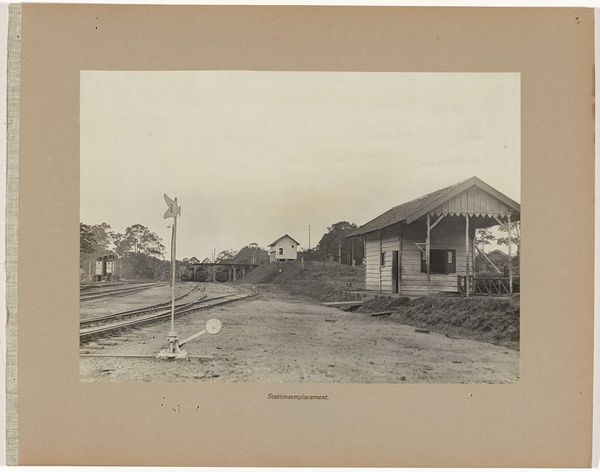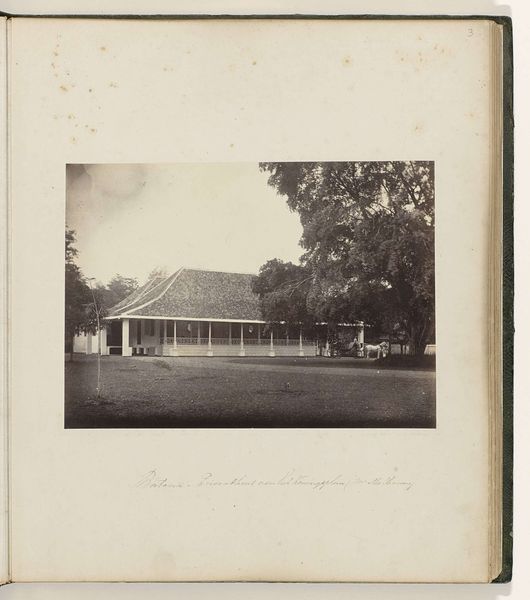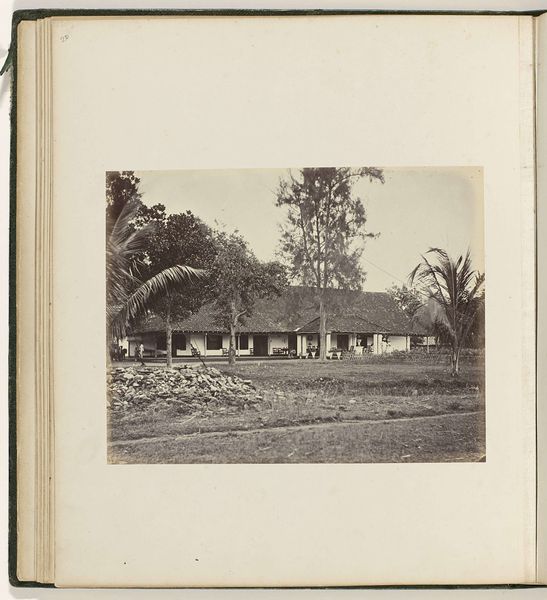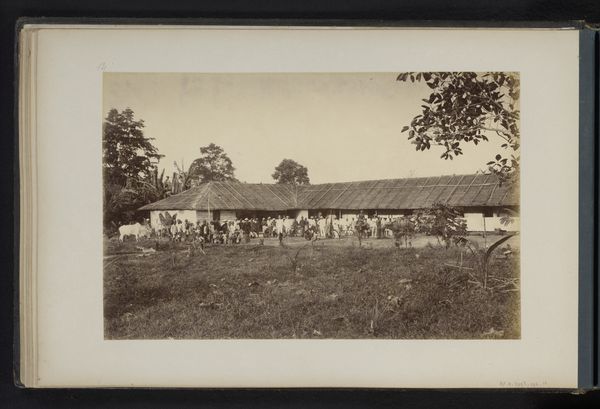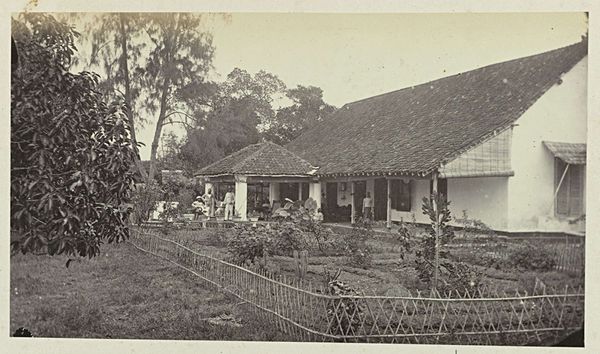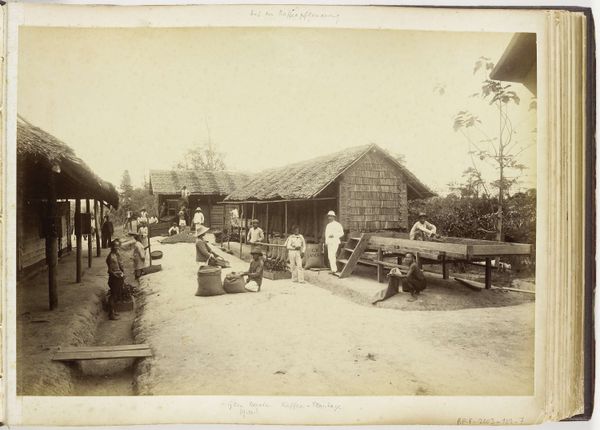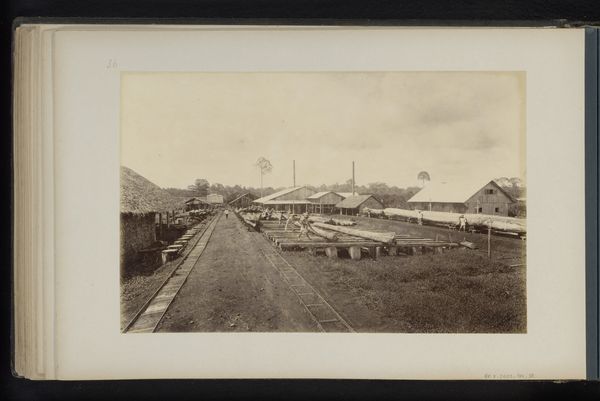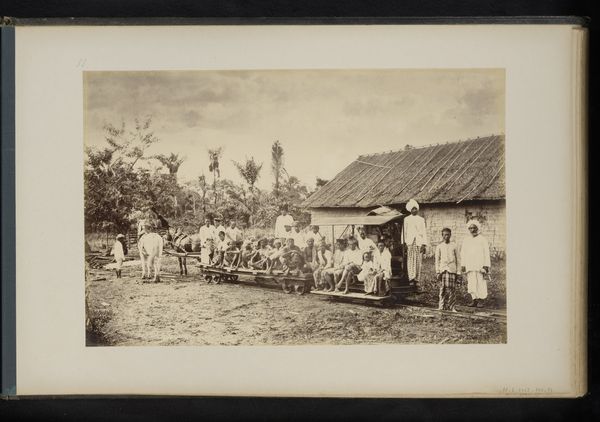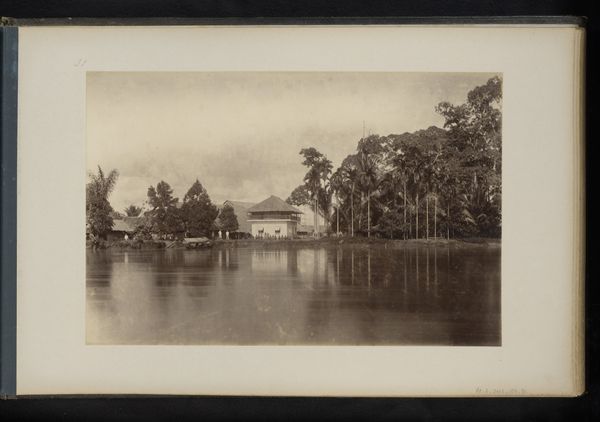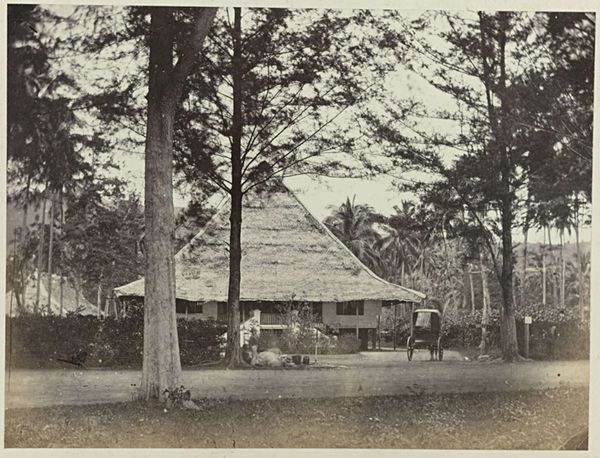
Gezicht op het huis van de opzichters van de contractarbeiders, Ludwigburgs Pantage, Sumatra c. 1890 - 1900
0:00
0:00
heinrichernstco
Rijksmuseum
photography, albumen-print
#
landscape
#
photography
#
orientalism
#
albumen-print
Dimensions: height 242 mm, width 373 mm
Copyright: Rijks Museum: Open Domain
Curator: This albumen print, taken circa 1890 to 1900, presents a "View of the House of Supervisors of Contract Workers, Ludwigburg's Pantage, Sumatra," attributed to Heinrich Ernst & Co. Editor: The albumen print imparts a dreamy quality. The contrast between the delicate architecture of the building against the stark landscape lends the photograph a subtle emotional tension. Curator: Indeed, the composition employs what was often a propagandistic visual rhetoric, characteristic of orientalism. Look at the house itself; it’s raised on stilts, a feature adapted to the tropical environment, but presented here to underscore European presence and supposed refinement amidst the perceived wilderness. Editor: I’m struck by the stillness of the scene, perhaps the deliberate result of the photographic process. All the lines, orthogonal in architectural elements, lead the eye across the facade. Do you perceive the building itself as the subject or something else in this piece? Curator: In terms of content, I find it to be more the aggregation of workers that speaks volumes to what this photographer wished to immortalize, documenting the racial hierarchy of colonial labor practices and a rigid social order. Consider who likely commissioned and consumed these photographs, bolstering the narrative of colonial dominance and its inherent inequalities. Editor: And, perhaps unintentionally, also immortalizing what it displaced? The visual choices underscore not merely power, but its constructed nature. How it sought to embed itself within the landscape and everyday life. Curator: Precisely, the interplay of the built environment and the subjugated workforce subtly exposes the ideological framework of that era. These albumen prints function almost as tools of power, each carefully arranged detail propagating colonial ideology. Editor: A sobering view, indeed. Despite the initial appearance of placid documentation, we are actually witness to a complex interplay of composition and context, offering a stark vision into the power dynamics inherent in this period. Curator: Ultimately, such a formal reading, grounded in the historical context, challenges any romanticized interpretation of this work. The beauty is thus laced with bitter truths.
Comments
No comments
Be the first to comment and join the conversation on the ultimate creative platform.
